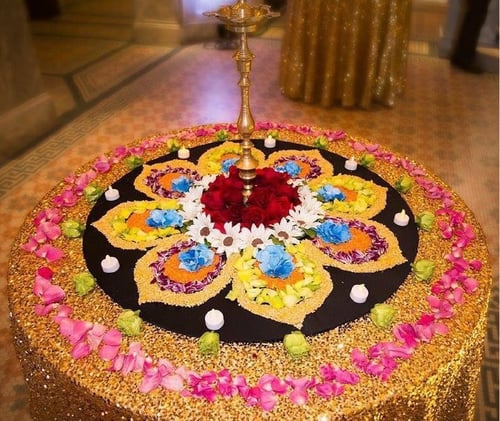DAY 19:
BUILDING WORKPLACE CULTURE AROUND EQUITY
“Racial equity is the condition that would be achieved if one's racial identity no longer predicted, in a statistical sense, how one fares. When we use the term, we are thinking about racial equity as one part of racial justice, and thus we also include work to address root causes of inequities not just their manifestation. This includes elimination of policies, practices, attitudes and cultural messages that reinforce differential outcomes by race or fail to eliminate them.”
“Systems that are failing people of color, are actually failing all of us.”
Today we’ll explore how to build a culture around equity. While the main focus throughout this 21-Day Challenge is on racial equity, it is important to acknowledge that people from various marginalized identities and experiences are negatively impacted by inequitable processes and policies. When equitable systems and policies are created, everyone is lifted up, ensuring our collective success.
The Government Alliance on Race and Equity (GARE) offers as an example the inequities in voting practices. When voting is constrained for Black and brown voters as a result of voter I.D. laws, limited polling availability, lifelong bans for people who have been incarcerated, and other barriers, many low-income white voters are also left out of the voting process (GARE, Why Working for Racial Equity Benefits Everyone, 2020).
There are various reasons to participate in this challenge, and one may be to transform your workplace from a culture rooted in white dominant norms and standards to a culture around equity. You may be looking for ways to increase representation from marginalized groups; strengthen your culture to be more inclusive; and look through a racial equity lens to see more clearly how your organizational operations and programs are impacting its diversity.
The information and resources included here will help you get to the next level.
Did you know?
- Native American women are typically paid just 57 cents for every dollar paid to white, non-Hispanic men (National Partnership for Women and Families, 2020)
- Compounding effects of multiple minoritized identities contribute to transgender women earning far less than white, non-Hispanic men. Transgender women earn even less than their transgender male counterparts (Center for American Progress, 2020)
- Despite making up only 13% of the total US workforce, racial discrimination against Black workers accounts for 26% of all claims filed with the Equal Employment Opportunity Commission and its partner agencies (Vox, 2019)
TODAY’S CHALLENGE: Do one or more of the following…
READ:
Awake to Woke to Work: Building a Race Equity Culture, from Equity in the Center, outlines ways that organizations can dismantle structural racism and inequities both inside and outside their organizations. (Agree to their license agreement to download the report.)- Read the executive summary on pages 2-3.
- Read the explanation of dominant culture in the context of building a race equity culture, found in the box on top of page 10.
- Read Building a Race Equity Culture in the Social Sector 2-pager.
WATCH:
Be inspired by your colleagues and neighbors who are transforming the work environment in central Iowa. In Right Where We Belong, a Program of CultureALL, community advocate Deidre DeJear interviews two local leaders who took action to create more equitable and inclusive work environments.
Mark Stringer, executive director of the American Civil Liberties Union (ALCU) of Iowa, feels it is important to look beyond the status quo to ensure he is leading in an environment in which people feel they belong.(8:30)
And Lindsay Ladd knows exactly what compelled her to create a hospital clinic just for LGBTQIA+ patients. (9:40)
View the full interviews here.
READ:
Review Racial Equity Tools’ new Glossary of Racial Equity Terms, with over 60 terms and definitions. The words and language we use hold significant meaning. Staying educated on these terms can help us engage in more inclusive and respectful dialogue.

REFLECT:
Enjoy this #InclusionStartsWithI video about the importance of a positive, inclusive work environment. The video demonstrates that bias can appear in both expected and unexpected ways—and that each of us has the power to make a difference. (3:27)
As you watch, consider:
- Is there someone you need to know better so you can see them as more than a stereotype?
- How might you forge a friendship with them that is authentic, respectful, and inclusive?
NEXT TOPIC: EQUITY TOOLS AND APPROACH FOR CHANGE
CONVERSATION PIECE: Art Addressing Equity

Artist: Sonal Mistry & Kirti Patel
Title: Indian Ancient Art – Rangoli Design
Date of piece: April 16, 2016
Description: Rangoli design for CultureALL Bollywood Ball Night
“This Rangoli (Indian ancient art) Lotus design was made using two types of lentils, fresh flowers & petals, and lamps. In India, traditionally rangoli is used to welcome guests joyfully. Rangoli designs can be made from sand powder too. These symbols indicate diversity & inclusion in our lives.”
Sonal Mistry
CultureALL
Thank you to the members of BRAVO Greater Des Moines for curating the Equity Challenge Gallery, a collection of art in various media that speaks to the issues of equity in our society.
%20white.png?width=202&height=99&name=21%20day%20equity%20challenge%20(banner)%20white.png)

